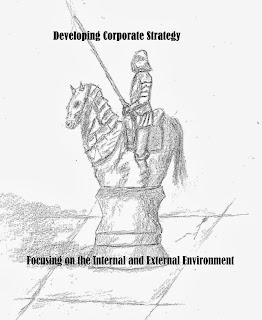Strategy formation may
be one of the most important aspects of managing a company. Without a proper
strategy the ship bounces around the sea in hopes of finding fruitful land. How
that strategy is formed is often a difficult question to answer. Research by
Pop and Borza, (2013) helps to determine how strategy works within small and
medium organizations (SME). This helps further solidify the concept that
strategy is based upon the environment and resources available
that help to make companies more competitive.
In developing strategic
decisions it is important for managers to interpret the signals coming from the
internal and external environment appropriately. Doing so creates an
opportunity to formulate strategies not only for their daily operations but
also for long term corporate interests. It is this strategy that will act as a
guide to regeneration and renewal that leads to corporate achievement.
Successful strategies
are developed, implemented and then re-evaluated. Companies that are static and
unable to change are the ones that will eventually suffer economic decline. Renewing products, procedures, marketing
campaigns, distribution methods, financial resources, and human capital
components are just some of the overall process that should be revisited and
improved on a continual basis.
To help determine how
strategy is evaluated, formulated and implemented at Romanian SMEs the
researchers conducted a number of case studies. They utilized five companies
and formulated their approaches into concepts such as the definition of
strategy, implementation, development, references, evaluation, and information in
the strategic process. The study helps
highlight the process of strategic development as well as the thought processes
that are applied.
Understanding the environment
and moving through a systematic evaluation of strengths and weaknesses was
beneficial. The process of environmental and competitive understanding was seen
as “keeping an eye on the market”. The decision makers used exact data to make
their strategies but maintained a level of flexibility to mitigate risk. They
adjusted their strategy when the market called for it.
When companies were developing
the mission and the management team’s personal values were extremely important
in developing appropriate statements and policies. Missions and processes have
changed overtime making strategy a fluid endeavor. There wasn’t a specific
point at which the companies made changes but they did so based upon their
understanding of their environment.
When change was needed
it was typically the manager or the executive that made the decision. They
focused on changing processes in order to adjust the internal workings of the
organization to the newly adopted strategies. At times these changes created a
positive or negative chain reaction throughout an organization. When these
changes were dysfunctional they changed the strategy or processes again.
Since many new
companies within their market went bankrupt the managers tried to maintain an entrepreneurial
stance and use strategy to ensure they are meeting their longer term
objectives. This included trying new products and services when they create an
opportunity. Yet despite their interest, the new opportunities needed to fit
within their strategic needs to be considered relevant.
Each company used their
own specific approaches to formulating a strategy. The report doesn’t go into
these concepts in depth but it is possible to see some trends that include 1.)
understanding environmental needs, 2.) understanding internal resources, 3.)
developing the strategy, 4.) changing processes to match the strategy, 5.)
being open to new opportunities within the strategy and, 6.) changing the
strategy when the market changes. As
such, strategy is a constant fluid evaluation of one’s internal and
environmental factors. It is a process of seeing the trends and meeting those
trends in ways that maximize financial growth and organizational
sustainability.
Pop, Z. & Borza, A.
(2013). Summarizing the crucial steps of the strategic management process
through the eyes of Romanian managers of SMES. Review of Economic Studies & Research Virgil Madgearu, 6 (1).

No comments:
Post a Comment